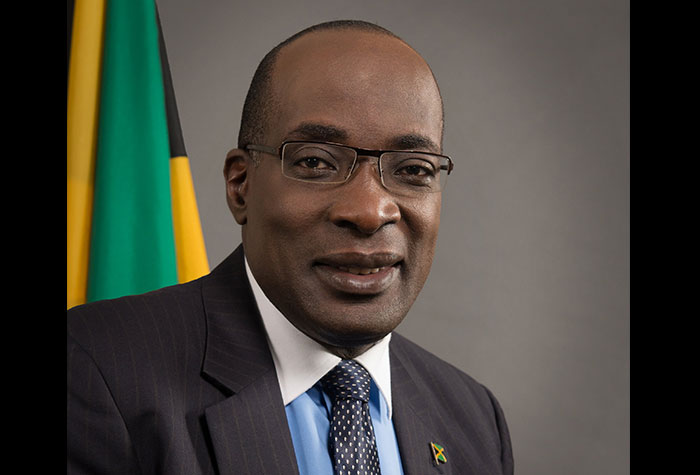Mr President,
It is indeed a privilege to contribute to this State of the Nation debate in the Honourable Senate. I am grateful for the opportunity to serve the nation in this capacity as Minister of Education, Youth and Information- a responsibility that was bestowed on me nearly three years ago by the Builder, and great leader, Prime Minister the Most Honourable Andrew Holness- the best Prime Minister Jamaica has seen.
I am grateful for the opportunity to serve and transform this country through education. Mr President, there is one thing I live by as husband, father, Minister, lay preacher and educator: put Jah God first, second and third and watch the blessings come forth, blessings come forth . I am indeed thankful for the support I have been receiving from various quarters, especially my wife Sharen and our two children; the Minister of State, Floyd Green, Permanent Secretary, Mr Dean-Roy Bernard, Chief Education Officer, Dr Grace
McLean, OD., and the rest of the team at the Ministry of Education, Youth and Information and its Agencies; my Jamaica College Family, my colleague Senators, Jamaica Labour Party family and the Constituents of North West St Ann. I give toast to di fren dem weh tek off heavy load.
Mr President, I have dubbed this address, “Navigating Education 4.0”. As I begin my presentation, I take this opportunity to present a brief comparison of the progress that Jamaica has made over the past nearly six decades. Independence in Jamaica marked a new era for the education system. Indeed, it marked the point at which Jamaica was able to pursue its own vision for the country. The vision acknowledged that the people are our greatest asset, and that we must educate them well. This was the era of the New Deal for education in Independent Jamaica. At the time, there were 693 Primary, All-Age and Junior High Schools, 26 Infant schools and 55 Secondary schools with a little over 6,000 teachers serving over 300,000 students. Currently, there are 764 Primary, All-Age and Junior High schools, and 171 Secondary schools. There are 35 public institutions for students with special needs and in collaboration with Jamaican Association on Intellectual Disabilities (JAID) special needs students are placed in over 19 private institutions. The number of teachers has moved from 6000 to over 25,000 – significantly improving the pupil teacher ratio in most schools. Additionally, a new curriculum has been introduced with associated assessments fully aligned, the first of which is the Primary Exit Profile being fully implemented this year. The school population has grown Mr President, to over 600,000 but the vision remains the same that: no child is to be left behind.
The public education system is the closest and most sustained point of contact between children, youth and the Government, and is the point at which the Government exercises its latitude to mould the population with the values and attitudes representative of the Jamaican citizen. Education has, and continues to be one of the Government’s key avenues and instruments in the pursuit of equity, the elimination of crime and poverty as well as the maintenance of discipline, public order, environmental responsibility, respect, productivity and other characteristics synonymous with the Jamaican identity.
Mr President, a study done by the HEART Trust/NTA recently placed the number of unattached youth at 158,400, which is significantly less than the estimates previously quoted, but still too many. The efforts by the Ministry to reduce these figures are concentrated around the need to introduce positive behaviours and to identify and curb violent behaviours in schools. The introduction of the Caribbean Maritime University (CMU) Cadet Marine Corps is one such collaborative effort, which has now been implemented in 23 schools, with more than 2,700 cadets and projected to expand to 50 schools this year. The Jamaica Combined Cadet Corps has also been expanded to include an additional 50 schools for this year. Furthermore, many schools have been provided with temporary Deans of Discipline, and Safety and Security Support Officers to assist in maintaining discipline and provide support to the students in schools.
To date a total of 250 hand-held metal detectors and 15 walk-through detectors have been delivered to over 150 schools through the support of the USAID programme. The Safety and Security in Schools Unit continues to work with the schools to ensure that the Safety and Security Committees are active. On average, up to 90% of the schools have their safety and security committees in place.


